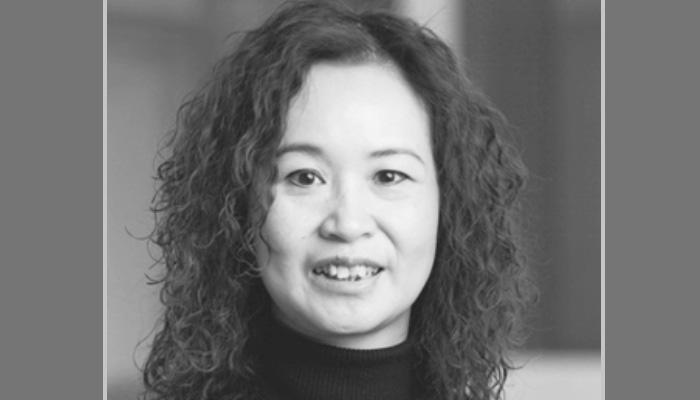
ARUP’S FLORENCE LAM SPEAKS ON NIGHT-TIME DESIGN
Lighting plays an integral role in making cities safer and more livable. Additionally, the architecture and beauty of a property is further accentuated with lighting. In such a scenario, the use of innovative lighting solutions have become important to accomplish plans of improving visual appeal using sustainable methods and technology. With a strong interest in visual light art, Florence Lam, Global Lighting Design Leader at Arup, will take center stage at the 4th Annual Middle East Smart Lighting and Energy Summit 2015 to discuss the technological advancements in lighting that enable the concept of sustainable city projects.
Florence leads Arup’s global lighting design practice, and has been responsible for a range of international projects in the fields of transportation, sports, arts, architecture and public projects including Abu Dhabi International Airport, King Abdullah Sports City, Stonecutters Bridge in Hong Kong, Shenzhen Stock Exchange, California Academy of Sciences, and the strategic lighting masterplan consultancy for 2022 FIFA World CupTM in Qatar. In an interview, ahead of the Middle East Smart Lighting and Energy Summit, Florence Lam, talks about the importance of night-time lighting.
- The Middle East is at the cusp of a transformational change. Given this, how do you envision lighting being fused with cityscapes in this region?
Public spaces play a vital role in the social and economic life of communities, especially after sunset with such hot climate in the Middle East. Night time lighting presents a great opportunity to positively impact the total architecture of cityscapes in reinforcing urban principles, enhancing cultural experience and encouraging social cohesions. Urban lighting is more than just a functional add-on for safety or beautification as afterthought. Lighting master planning is therefore critical in formulating a 24/7 holistic planning strategy in delivering sustainable 24-hour cities of the 21st century.
- While lighting is no longer considered as just another basic commodity, according to you, how vital is lighting technology in enhancing the beauty and urban experience in a city?
Rapid advances in lighting, information technology and intelligent systems offer immense opportunities for radical new approaches in activating urban life at night. But the success will rely on our understanding of this technology. Technology should never be the only driver for change; change should respond to a clear social or environmental need. I believe the most exciting future development will not be about the technologies but how technologies are used in an intelligent way to create responsive lighting to changing nightscapes. We will see city’s lights change depending on time and usage patterns of the public realm after dark – articulating what we call the different shades of night.
- Abu Dhabi Municipality has undertaken massive measures as part of its lighting strategy, what are your thoughts on the nocturnal lighting landscape of the city.
The Municipality has taken a giant leap forward with its lighting strategy in the recent years, setting admirable precedence in the Middle East region and beyond. In my view, nocturnal lighting is not the end in itself but an integral means to how holistic approaches to urban design are delivered, helping create vibrant, prosperous, safe and inclusive places for those who live, work and play in cities after dark. Abu Dhabi is now ready for lighting design professionals to not only push the boundaries, but to break down the barriers between different design disciplines and lighting, ensuring a truly human-centric approach is extended to urban design and planning and create a cohesive social nightscape for the city.
- What role does Arup play in helping cities improve their lighting infrastructure?
In delivering design solutions for cities and their constantly evolving urban places, Arup starts at a strategic level. From sensitive historic interventions for existing cities (eg. Mshereib Development in Doha) to ambitious new urban developments (eg. New Songdo City), we combine creativity with technical expertise to propose solutions that enhance the way cities work from day to night. Light can be a catalyst to transform and activate a city at night … for a city like Doha in realizing Q22’s goals, we delivered a strategic lighting masterplan for the Qatar 2022 Supreme Committee, using light to define the character of the FIFA World Cup tournament to ensure a sustainable and amazing experience for all participants of the tournament.
Over the last few years, apart from delivering iconic urban lighting projects such as the Sheikh Zayed Bridge and the YAS Marina Hotel, Arup recently curated a public exhibition in London and produced a publication, which clearly articulates the value of urban lighting and provides key insights and tools for improving night-time design, raising the awareness of the vital role that urban lighting plays in cities among various stakeholder groups (planners, architects, designers, developers, public authorities, landowners and the general public).
- What will be the focus of your session at the Middle East Smart Lighting and Energy Summit? What will be the key takeaway for attendees from your presentation?
My talk will discuss the need for prioritizing human centric night-time design in urban development. It will include case study and research work which explore the notion towards the 24hr city and illustrate the key role that night-time lighting play in augmenting cultural experiences, encouraging social interaction and contributing to cities’ night-time economy. The aim is to help the audience to understand how urban lighting can enhance and impact upon effective place making.
Hear Florence Lam speak at length during the 4th Annual Middle East Smart Lighting and Energy Summit 2015 that will be held on 23-24 November, 2015 at Jumeirah at Etihad Towers Abu Dhabi.



























